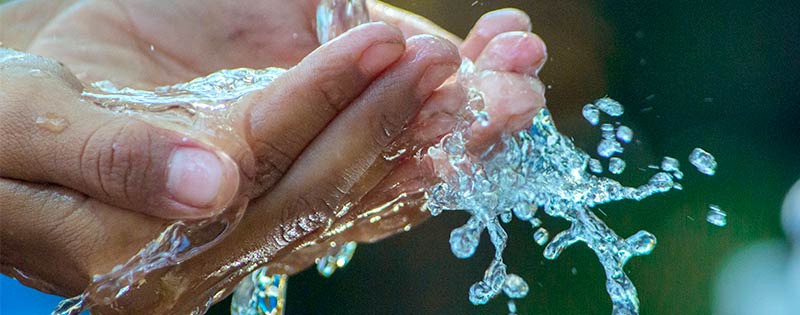by Brent Hearn •
December 1st through the 7th is National Handwashing Awareness Week, so now is as good a time as any to learn a bit about the history of handwashing and remember once again to…
“Wash your hands!”
From the mouths of our mothers to sound bites blaring at us from screens as COVID-19 spread around the world, it’s an admonition with which most of us are familiar. From a healthcare perspective, it’s one of the most basic things we can do to protect ourselves. It’s advice that we’re all so used to hearing that it can be hard to imagine not hearing it. But from a historical standpoint, handwashing for the sake of our health hasn’t been around nearly as long as you might expect.
A Bit of History
In the 1840s, an alarming number of women in Europe were dying from something called puerperal fever shortly after giving birth. A Hungarian physician named Ignaz Semmelweis worked in a hospital with two maternity wards, one staffed by male doctors and medical students and another staffed by midwives. Dr. Semmelweis was perplexed. He wanted to know why the mortality rate was over twice as high for women whose babies were delivered by doctors and medical students than by the midwives.
After discounting other variables, Semmelweis found the culprit. The doctors were spending their mornings observing and assisting in autopsies performed by the medical students as part of their training. They then spent their afternoons in the maternity ward examining the mothers-to-be and delivering their babies. The midwives, on the other hand, only attended to patients in their ward. Though Semmelweis didn’t yet fully understand the reasoning (germ theory was barely existent at the time; he referred to the culprits as “decomposing animal organic matter”), he rightly concluded that doctors going directly from working with cadavers to delivering babies without washing their hands might not be the best idea.
After instituting a handwashing policy, mortality rates plummeted, and…Semmelweis’ ideas were roundly rejected. That’s right! He saved countless lives and was rewarded with derision and hostility. (Apparently human beings have yet to meet a piece of solid healthcare advice we won’t ridicule.) Eventually, however, Semmelweis’ work would be vindicated by others, and the washing of hands and surgical instruments became commonplace. The push for handwashing on a broader scale didn’t arrive until much later, however. The first national hand hygiene guidelines weren’t introduced in the U.S. until! the 1980s!
When to Wash Your Hands
Most of us are familiar with the basics of when to wash our hands, but we’ll cover them anyway. If it has to do with food preparation or consumption, wash your hands. If it has to do with elimination or the products of elimination, wash your hands. If it has anything to do with bodily fluids or medical care, wash your hands. If it has to do with pets or garbage, wash your hands.
How to Wash Your Hands
(Note: The following steps are taken verbatim from the Center for Disease Control’s website. For more detailed advice on when and how to wash your hands, check out the CDC guidelines.)
Follow these five steps every time.
-
- Wet your hands with clean, running water (warm or cold), turn off the tap, and apply soap.
- Lather your hands by rubbing them together with the soap. Lather the backs of your hands, between your fingers, and under your nails.
- Scrub your hands for at least 20 seconds. Need a timer? Hum the “Happy Birthday” song from beginning to end twice.
- Rinse your hands well under clean, running water.
- Dry your hands using a clean towel or air dry them.
Sources
https://www.nationalgeographic.com/history/article/handwashing-once-controversial-medical-advice
https://www.ncbi.nlm.nih.gov/books/NBK144018/









 ▶︎
▶︎  Why is the Discount Challenge prize amount $15,024? Because that is the average “per-occurrence” fine for Medicare inducements. That’s not $15,024 per patient, that’s not per provider, that’s PER VISIT. Stinks, doesn’t it? To us, the prize amount is worth the investment if we can help our profession better understand proper discounting.
Why is the Discount Challenge prize amount $15,024? Because that is the average “per-occurrence” fine for Medicare inducements. That’s not $15,024 per patient, that’s not per provider, that’s PER VISIT. Stinks, doesn’t it? To us, the prize amount is worth the investment if we can help our profession better understand proper discounting.